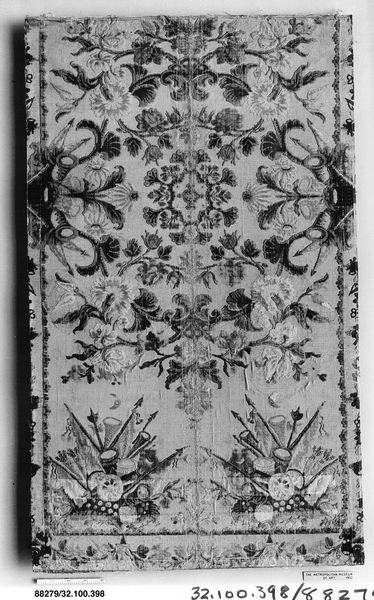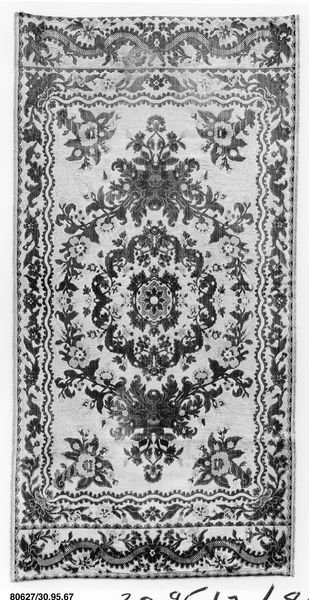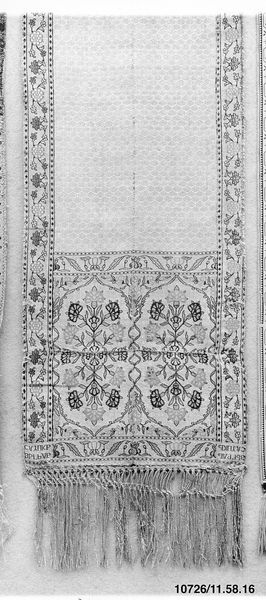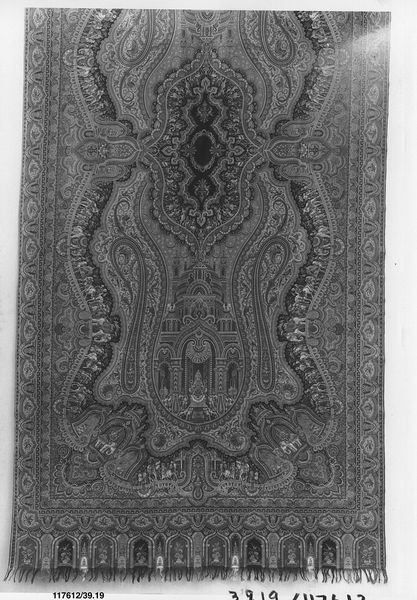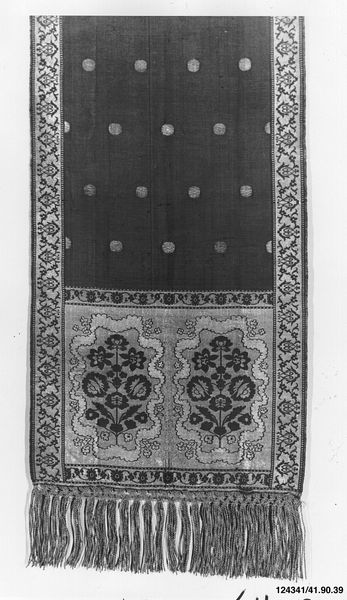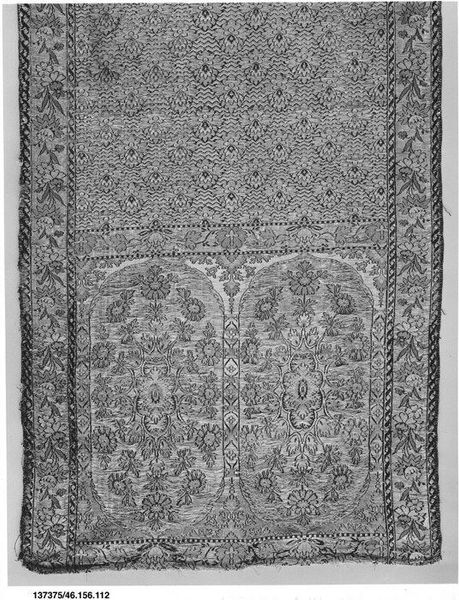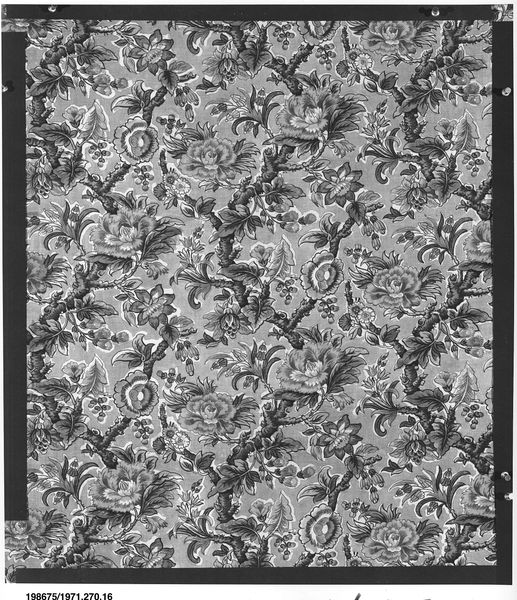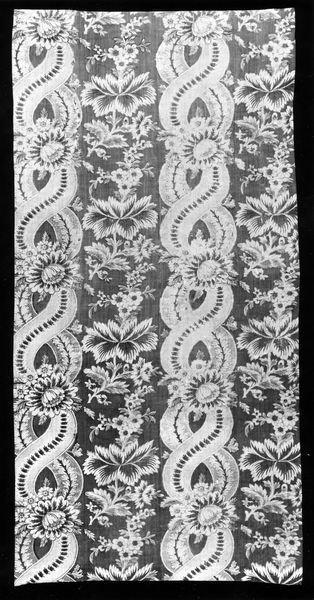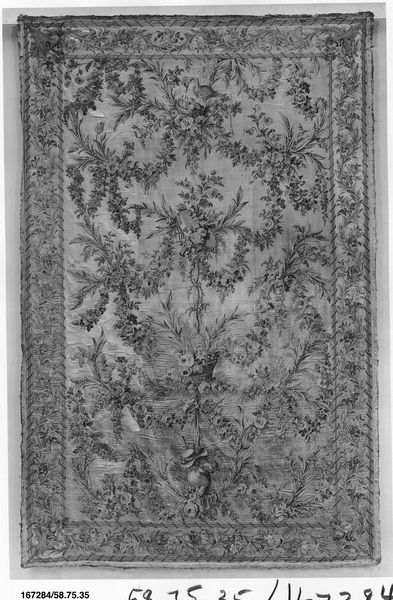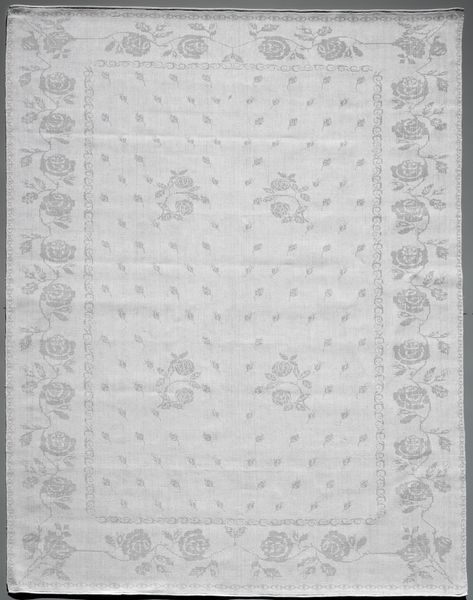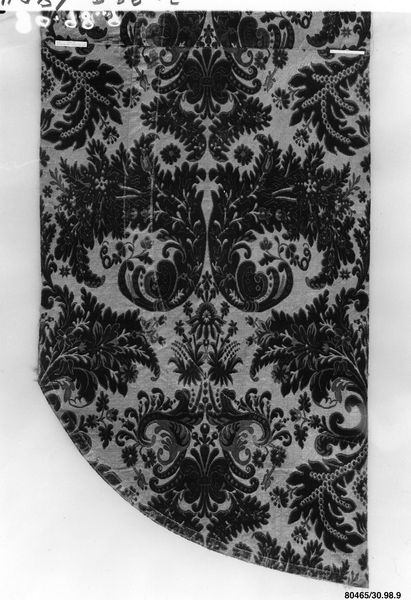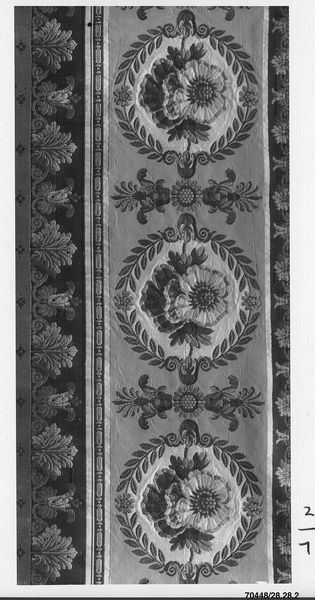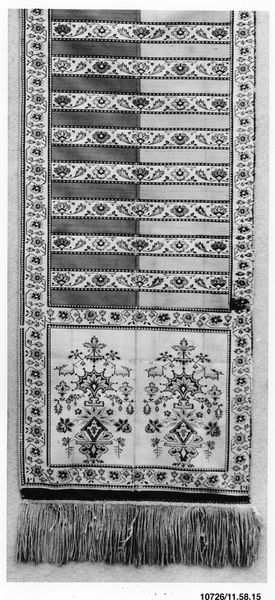
weaving, textile
#
weaving
#
textile
Dimensions: L. 52 x W. 20 1/2 inches 132.1 x 52.1 cm
Copyright: Public Domain
This Runner, now at the Metropolitan Museum of Art, was crafted by Antonio Pollaiuolo sometime in the 15th century. It’s made entirely of delicate needle lace, also known as punto in aria, or “stitches in the air.” Imagine the painstaking process: each stitch placed with precision to form a complex pattern of oak leaves and acorns, a symbol of strength and endurance, and the Medici emblem at the center. Notice how the openwork structure of the lace creates a play of light and shadow, giving the textile a sense of depth and movement. It would have been commissioned by a wealthy family during the Renaissance. The labor-intensive process of creating needle lace meant that it was a luxury item, and a display of both wealth and taste. The creation of these runners supported local economies and social structures of the time. The value we place on an artwork like this really reflects the immense amount of hand work involved in the process, the culture and traditions of needle lace, and the social context in which it was created.
Comments
No comments
Be the first to comment and join the conversation on the ultimate creative platform.
